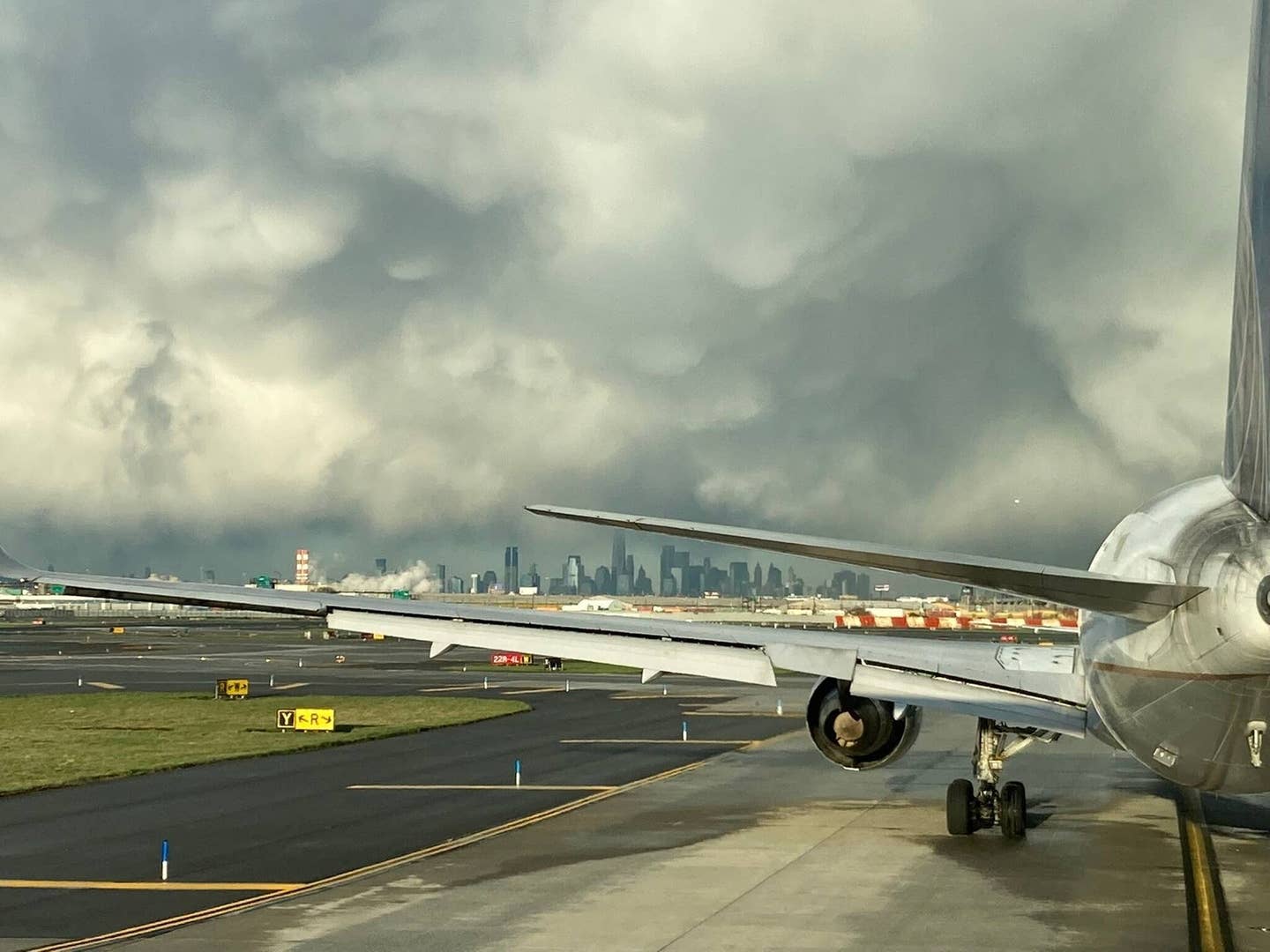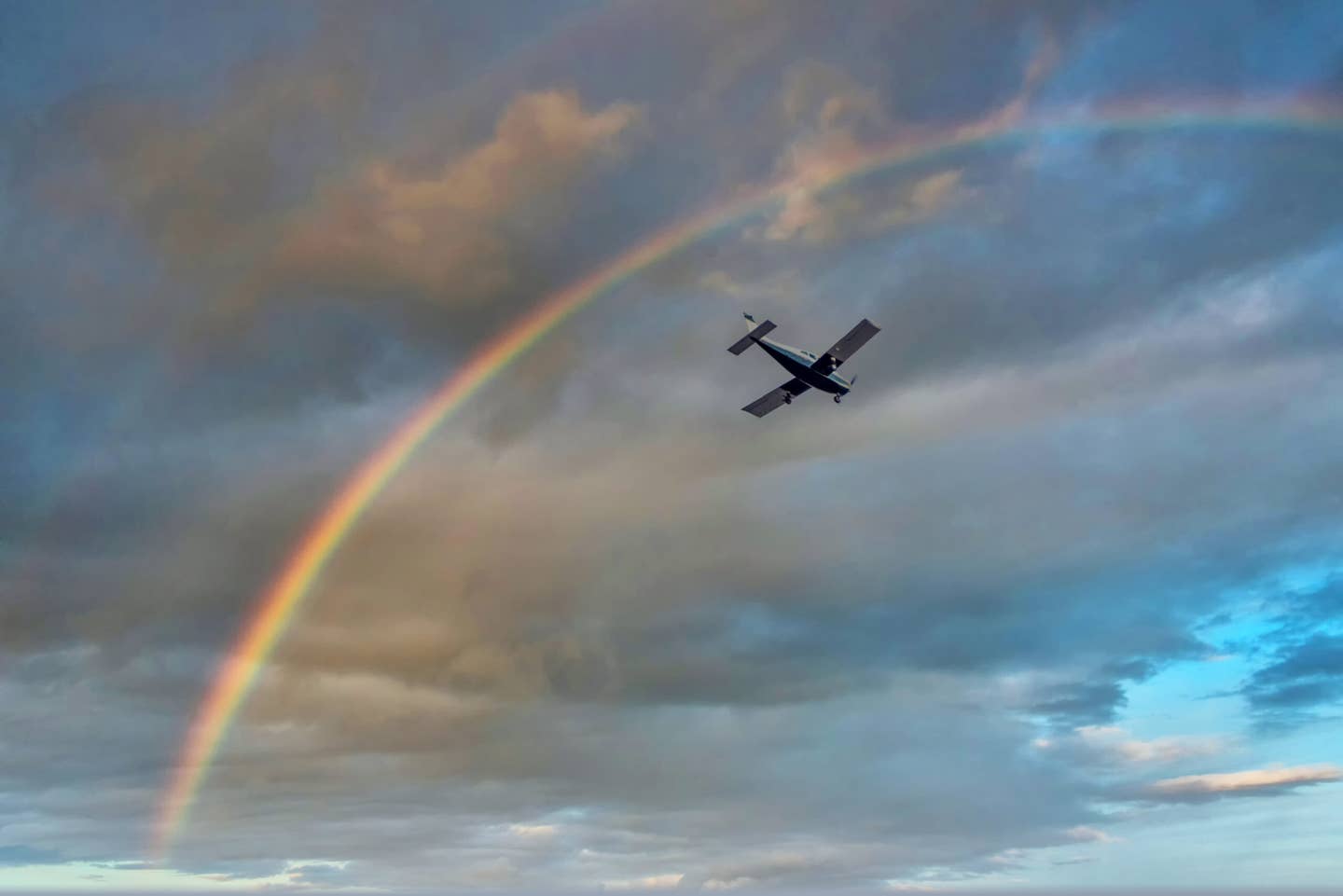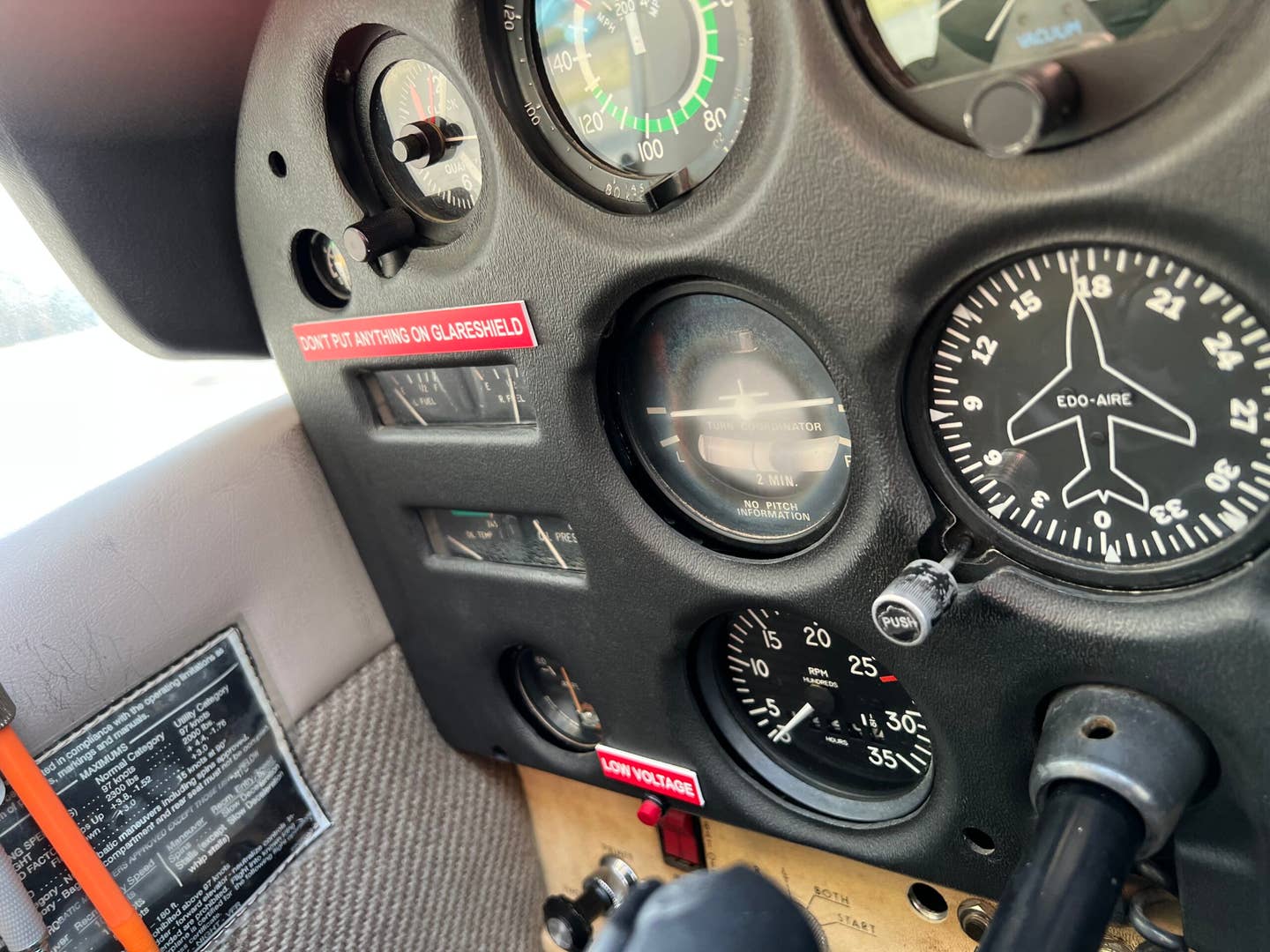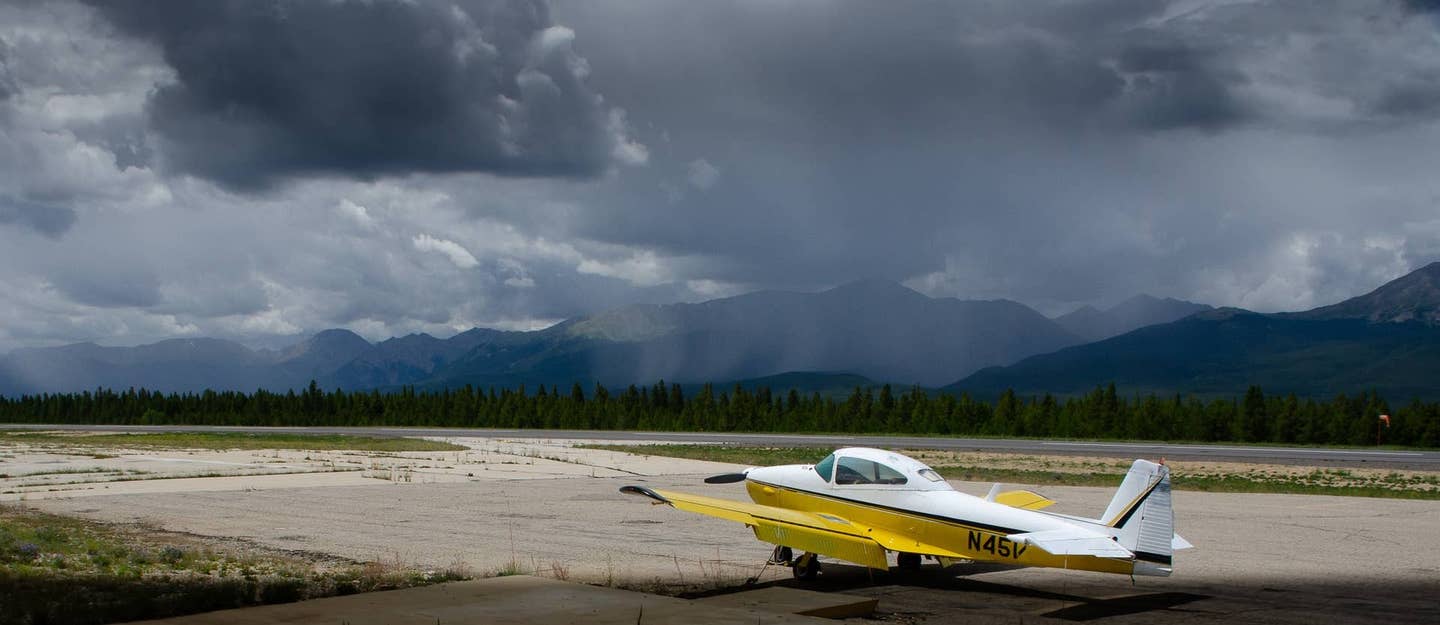
_(__April 2011)_ BY NOW I HOPE YOU’VE heard of the plan by a company called LightSquared to install as many as 40,000 stations across the continental United States that would transmit on the frequency band directly adjacent to the one used by GPS. LightSquared’s plan is to create, using this quiet little corner of the spectrum, a powerful, largely ground-based mobile broadband network that would allow users on the ground to surf the Web at high speed across the United States.
To put it lightly, there are huge problems with this plan. According to tests conducted by Garmin and Trimble and presented to the Federal Communications Commission (FCC), the proposed network would interfere disastrously with GPS receivers. Garmin reported that a single LightSquared transmitter would cause a Garmin GNS 430W, the most popular GPS receiver in general aviation, to detect interference at around 13 miles, lose a great deal of its signal at approximately seven miles and lose its position altogether at around five miles. It can take, the report continued, up to 90 seconds for the receiver to regain its bearings.
You don’t have to be a pilot to figure out that this is a very bad thing for safety. Imagine sticking 40,000 pushpins into a map of the United States, and you get the picture. These transmitters will be all over the place, and every one of them will be a black hole for GPS reception. The proposed network would surely be the death of sole-means GPS navigation and WAAS approaches, and perhaps of GPS navigation itself.
What makes this all the more troubling and baffling is that LightSquared’s primary collaborator has been none other than the FCC, the federal agency that is supposed to be in charge of safeguarding the spectrum, not booby-trapping it.
If the FCC had merely approved the scheme, that would have been bad enough. But what it actually did was unconscionable.
Many pilots know that the GPS signal we receive is a weak one, a fact that makes the worldwide satellite navigation system practical with a constellation of satellites as far as 23,000 miles away from Earth. So the FCC smartly limited the power of the satellites in adjacent bands so that the GPS signals wouldn’t be interfered with by more powerful signals on close-by frequencies. And LightSquared complies with that part of the plan. The satellites on which it will broadcast its 3G-like signal transmit a signal that, by the time it reaches Earth’s atmosphere, is very low power.
The part that would ruin GPS for everyone is LightSquared’s scheme to install “backup” transmitters on the ground to supplement its satellite system. In this “backup” plan, LightSquared is being duplicitous. These terrestrial transmitters aren’t backups at all. They are actually the backbone of its proposed service and business plan. Without them, LightSquared couldn’t offer true broadband mobile service. While helper ground stations are technically allowed, their inclusion in the system is clearly an attempt by the company to use its status as a satellite provider in order to establish a high-powered ground network that otherwise wouldn’t be allowed. It’s an extremely clever plan that would also do great harm. There’s a word for that: diabolical.
The worst part is that the FCC has signed off on the plan despite acknowledging the threat of interference. It has ordered a commission to study the effects, as if they weren’t already well understood, and it has ordered LightSquared to work with the GPS industry to figure out ways to help receivers properly filter the interference. Just how much that will cost GPS users — that’s you and that’s me — isn’t addressed, but adding filters and redoing hardware doubtless will cost thousands of dollars per unit.
While there are hundreds of thousands of aviation users of GPS, there are hundreds of millions of nonaviation GPS users who would be affected by LightSquared’s clever plan and the FCC’s negligent management.
If there’s any hope for the death of LightSquared’s dangerous system, it is that there is one user that matters more than the rest of us combined: the Department of Defense. It created GPS, allowed us to use it and counts on its accuracy for everything from smart bombs to battle planning. That the Defense Department hasn’t already nuked LightSquared’s plans is surprising. But I have little doubt that it will happen.
Regional Machines
I admit that I'm probably not always the best advocate for light airplanes as business tools. I do have a good excuse, however. My lack of evangelic zeal on the subject is simply due to my deep-seated belief that small airplanes are perfect business tools. I know because I've been using them that way for most of the past 15 years. So if I forget to sing the praises of light airplanes as traveling machines, it's only because I'm a true believer.
When it comes to traveling places in small airplanes, we often think of how they stack up against the airlines, and it’s a fair argument, to a point. (To make it a fair fight, you do need an instrument rating and you do need to stay proficient. That should go without saying.)
For the most part, who wins that match depends on how you define the field of play. A 750 nm to 1,000 nm flight in the Cirrus is fun, and I can avoid the security lines, parking lots and airport food. But the tradeoff is that 1,000 nm is a long way to go even at 200 knots. A fuel stop, even when not necessary to complete the flight with reserves, is often still a good idea.
No matter how you cut it, the costs are pretty high, especially if you’re traveling alone. But if you’re already committed to flying yourself, which many of us are, and if you’re already paying hangar rent to begin with, well, traveling by light airplane makes a lot of sense. The cost of fuel is just part of the commitment.
In many cases, the door-to-door times between flying Southwest and flying yourself even on a 1,000-mile trip will be very close. And if the airline trip were to involve a connection, the light airplane option will often make the Cirrus a clear winner for me.
Light airplanes can beat the big boys on such trips in many cases, but as the trip gets longer, this is less and less the case. Where you’re planning to go is a critical consideration. A change of airplanes is the norm these days on most domestic airline flights, which can add hours to the process and expose you to airport terminal life in ways that will make you long to be droning along in your single. This I know for a fact.
The one area where small airplanes excel, I can attest, is in short regional flying, flights of around 500 nm or less. These days I never even look at the airlines for these kinds of flights. Like most pilots who fly for transportation, there are several flights that I keep in my favorites folder for quick access, such as from Austin, Texas, to Wichita, Kansas; Kansas City, Missouri; or Albuquerque, New Mexico. On any of these trips, I can plan to have lunch at my destination and be back at home in time for dinner that night or, if I have plans for the evening, in time for lunch the following day. Try that on the airlines and you’re in for a struggle. Add to that the facts that ticket costs for regional trips can be shockingly high and you can’t always get flights when you need them. Not to mention you get to go through security twice in one day. No, thanks.
I’ve found the case just as compelling for even shorter flights. Even though there’s frequent service between my hometown and both Dallas and Houston (trips of around 200 nm, give or take), the little airplane is a better, faster bet. I could drive, but that’s not about to happen. Why not? The trip to north Dallas, where I had a photo shoot the other day, is about 4½ hours with evening traffic. Multiply that by two and it’s an entire day of driving. In the Cirrus, it’s 1¼ hours block to block. It’s a no-brainer.
Just the other day I had lunch with some folks from Sporty’s and ForeFlight in Houston. I woke up, drove my son in the middle school car pool, went to the airport, flew to Hobby, had some great barbecue while doing a little business, and then got home in time to take the dog to the park before it got dark.
Try that in your Toyota.
Farewell, Lane
When Lane Wallace came to Flying a dozen years ago, she assumed a position that we at the magazine only half jokingly called the "Baxter Chair of Hangar Flying," referring, of course, to our late great columnist Gordon Baxter. For years in his popular Bax Seat column, Gordon spun tales (some of them reportedly true) of his crazy flying adventures. Lane arrived on the heels of Baxter's reluctant retirement from these pages amid much skepticism that anyone could take Baxter's place. It's hard to try to fill the shoes of a legend, and Lane didn't. Instead she succeeded beyond all expectations with her column, Flying Lessons, in being Lane.
As it was with Baxter, Lane’s directive was simple: to communicate her passion for flight to the readers of this great magazine. While many of these readers love powerplants and aerodynamics, navigation and technology, they also want to read about a different side of flying, a side that’s not easily quantified. It’s the right-brain side, the emotional, artistic and creative side of what we do, on which Lane focused her considerable talent. Some if it is pure nostalgia, granted, but who among us doesn’t love to talk about our first airplane or that great cross-country adventure from years past?
Lane wrote about this kind of flying with passion and in a way that connected strongly with many of our readers. Over the years she wrote about her experiences flying her beloved "spam can" Cheetah, about her opportunities to hobnob with aviation legends like Harrison Ford and Patty Wagstaff, and about her chances to fly some pretty cool hardware, from blimps to spy planes. In her swan-song Flying Lessons column this issue, Lane recounts many of those adventures, so I won't go into detail here. Suffice it to say, however, that she has provided a great deal of reading pleasure to many pilots, myself included.
So it’s with sadness that I bid goodbye to Flying Lessons and urge you all to read Lane’s compelling farewell column. But it’s with happiness too, knowing that a fellow aviation writer has gone in search of new challenges and new paths. And it’s with gratitude for the many enjoyable columns that Lane has given us over the years.

Sign-up for newsletters & special offers!
Get the latest FLYING stories & special offers delivered directly to your inbox






